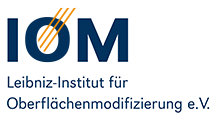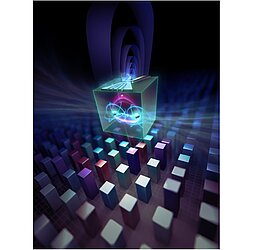Whether in our phones, cars, televisions, medical equipment or even washing machines, computers are everywhere today. Larger computers help us solve larger problems, such as managing an electrical grid, designing an airplane, predicting the weather, or providing various types of artificial intelligence (AI). All of these machines work by manipulating data in the form of ones and zeros (bits) using classical techniques.
However, the constant technological progress of humanity presents us with problems that can no longer be solved even with the most powerful classical supercomputers. To meet these challenges, quantum computers are needed that utilize the special laws of quantum mechanics and store information in quantum bits or qubits. A qubit can be formed from any quantum object with two or more states, e.g. an electron whose spin can point either up or down.
These qubits can be manipulated using microwaves or laser beams, for example, and even set to states that are a quantum-mechanical mixture of zeros and ones. This versatility is the basis for the great potential of a quantum computer to solve in a few hours computing tasks that would take centuries for conventional supercomputers.
Solving complex computational problems of societal relevance requires powerful quantum computers that are comparable to today's classical processors in chip architecture, size and complexity. This means that a quantum processor requires a large number of physical qubits in a regular, scalable arrangement.
Silicon is the key material of today's information technology industry. It is abundant as a semiconductor and has a wide range of uses. The ability to create scalable atomic arrangements using proven industrial manufacturing tools makes silicon, the main element of classical computers, suitable for building reliable quantum computers. By introducing dopant atoms in a targeted manner, it has already been possible to create, program and read individual qubits in silicon.
Researchers at the University of Melbourne and the IOM cross-section unit “Tools/Development of deterministic ion implantation for applications in quantum technology” have now developed several methods for deterministic material doping that are suitable for building large-area donor arrays for quantum information processing in silicon.
One possibility is to use diatomic antimony molecules, so that closely spaced pairs of antimony atoms are created during each implantation. These pairs can harbor up to six high-quality physical qubits that can be controlled by a single electronic gate, which is referred to as “multi-qubit gate operation”.
The next step is to build a quantum processor from regular arrangements of a large number of qubits equipped with the necessary circuits with which the interactions of the qubits can be programmed and controlled.
The results of the study were published in the journal Advanced Materials under the title “Scalable Atomic Arrays for Spin-Based Quantum Computers in Silicon” (https://doi.org/10.1002/adma.202405006).

